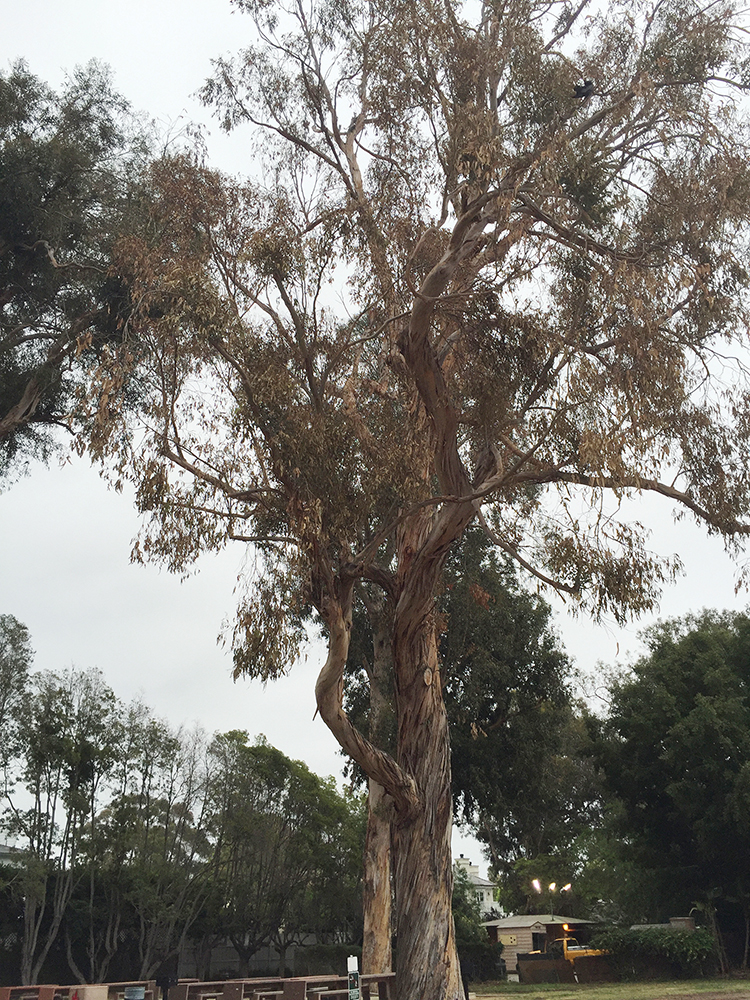By Sue Pascoe
Editor
Steve Dunlap, a spokesperson from the Forestry Division of the Los Angeles Department of Recreation and Parks, was not encouraging as he spoke about the health of trees in city parks during the quarterly Park Advisory Board (PAB) meeting on July 20.
“Forty thousand trees in 500 parks are dead,” Dunlap said. “This is due to the last five years of the incredibly driest weather we have had.”
Dunlap said that 28 trees (mostly pines and eucalyptus) have been cut down at the Palisades Recreation Center because they were diseased or dead. Ten more dead or dying trees will have to be cut down.

Most of these trees have succumbed to Polyphagous Shot Hole Borer, Golden Spotted Oak Borer, Thousand Canker disease and Xyellela fastidiosa (leaf scorch), Dunlap said.
When trees don’t receive enough water, they are not able to fight off invasive insects. “Usually the tree will encapsulate the insect with sap, which kills it,” Dunlap said. “The lack of water takes away the tree’s self-protection.”
He explained that park trees went from lots of water to very little. The lack of water isn’t only the result of drought, but from watering restrictions imposed by the Department of Water and Power. Additionally, Recreation and Parks must now pay its own water bills. “Up until four years ago, DWP didn’t charge for water, but they do now,” Dunlap said.
In an earlier interview, L.A. Recreation and Parks General Manager Michael Schull told the News, “About a decade ago, the City required that our department start to pay its own utility bill [$20 million last year]. Even though we’ve reduced our water usage by 50 percent since 2008, last year our water bill went from $9 million to $14 million.”
An incredulous audience member asked, “The city is saying we don’t want to help save the trees, and they’re going away because DWP won’t help?”
Dunlap said, “We need to conserve water and make a budget.”
In a July 24 email to the News, Parks As- sistant General Manager Ramon Barajas explained, “By ordinance we are currently allowed to water three days per week, two 15-minute cycles per day. The days are determined by the facility address. I asked staff to aerify and fertilize the grove [at the Palisades Rec Center] to try to get some food and relieve compaction in the area.”
Barajas explained that additional water will be used to absorb the fertilizer into the ground. “Once the fertilizer’s been dissolved, we will go back to irrigating according to the ordinance,” he said.
At the PAB meeting an audience member asked, “How will the city justify the cost of taking out all the dead trees and replant- ing them, when they could just turn on the water?”
Another person asked about drip irrigation. Dunlap acknowledged it does work, but in the parks, pipes would have to be placed underground, and it could be a problem for established trees because of damage to the roots caused by digging. Another person asked if well water was available for watering. Dunlap said he could bring it up at the next meeting.
Dunlap said a team of experts that include Fred Roth (Cal Poly Pomona), Don Hodel (UC Riverside), Jorge Ochoa (Long Beach State College) and Rec and Parks Forestry staff (Dunlap, Arthur Flores, Fred Hall and Leon Boroditski) had been assembled to examine the problem.
“The goal for the committee is to establish a plan for the reforestation of our parks utilizing the latest data from ongoing studies and developing planting palates that will flourish with our current conditions,” Dunlap said.
A resident asked if the residents who live adjacent to the tennis courts could purchase new trees and have them planted. Dunlap said it is the wrong time of year to plant trees.
PAB members asked about the bare island in front of the small gym, where six dead stone pine trees were cut down this spring. Since the parking lot is supposed to be reconfigured, with some parking spaced into that island, no trees will be planted there until that project is finished.
Asked if there was anything special that can be done to save a tree that is dying, Dunlap said: “By the time you notice there’s a problem, it’s too late.”












You must be logged in to post a comment.